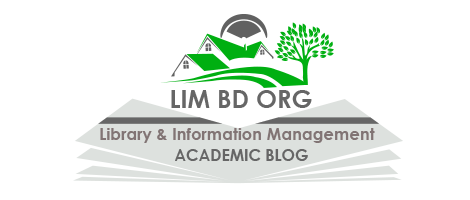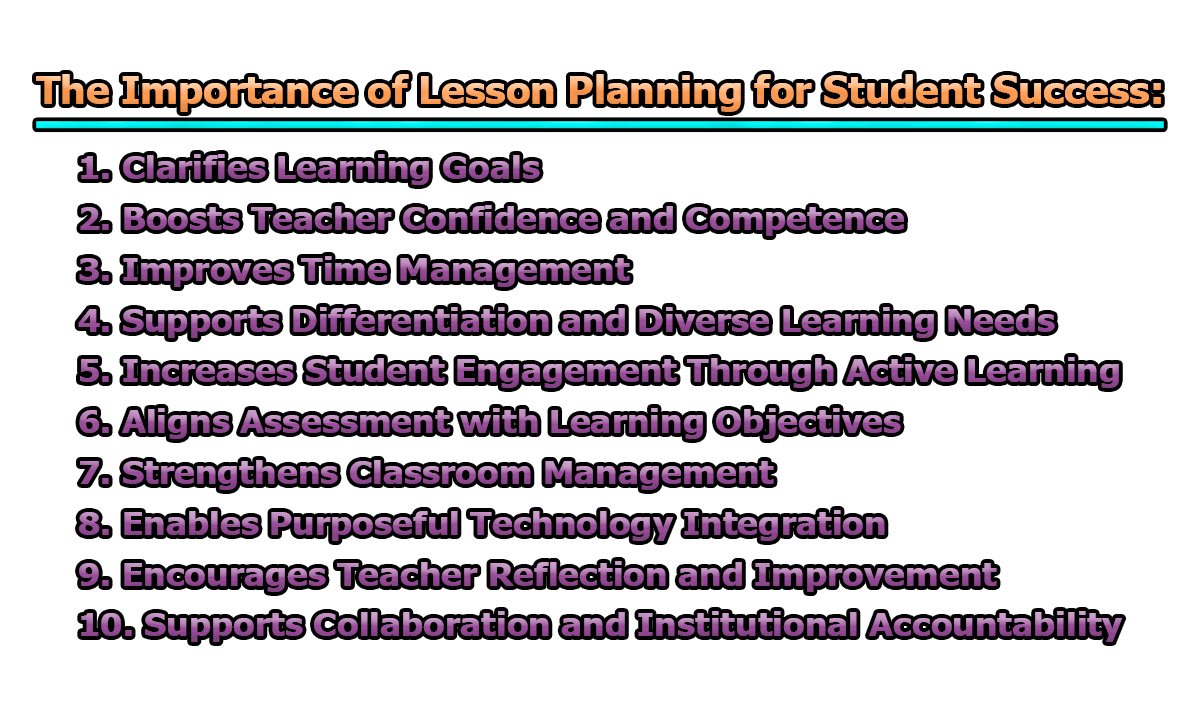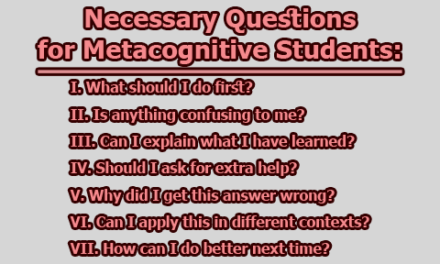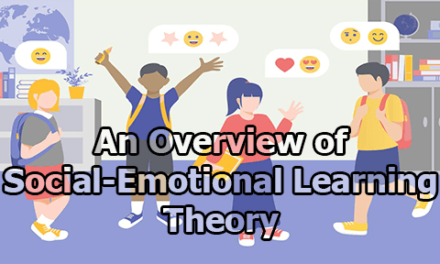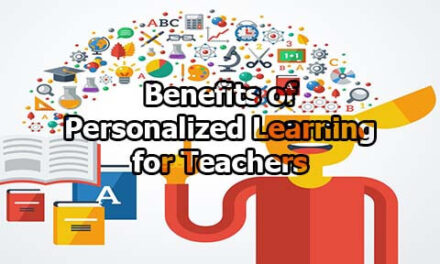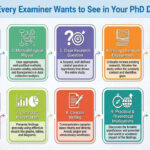The Importance of Lesson Planning for Student Success:
Lesson planning is one of the foundational pillars of effective teaching practice. Well-crafted lesson plans provide clear learning goals, structure time, address diverse student needs, align instruction with assessment, and enable reflective practice. Thoughtful planning helps teachers foster engagement, support inclusion, and create the conditions for student success. This article explores the importance of lesson planning for student success.
1. Clarifies Learning Goals: A well-crafted lesson plan begins with clear learning objectives, which are precise statements of what students should know or be able to do by the end of the lesson. Robert Mager (1997) emphasizes that objectives should be specific, measurable, and observable — so both teachers and students have a clear target. According to Biggs and Tang (2011), defining objectives also ensures constructive alignment, which means the teaching activities and assessments are directly linked to what students are expected to learn.
Example: Imagine a high school biology teacher designing a lesson about photosynthesis. A vague goal like “Students will understand photosynthesis” may confuse students and make assessment difficult. Instead, a clear objective could be: “By the end of this lesson, students will be able to describe the process of photosynthesis and explain the role of sunlight, water, and carbon dioxide in producing glucose and oxygen.”
With this objective:
- The teacher can select targeted activities (e.g., labeling diagrams, conducting experiments).
- Students know what they need to focus on.
- The teacher can design a quiz or short written response to check whether students can indeed describe and explain as required.
Clear objectives also help students self-assess their understanding and prepare effectively for tests or further lessons (Biggs, 2003).
2. Boosts Teacher Confidence and Competence: Effective lesson planning builds teachers’ confidence and enhances their instructional competence. When a teacher plans carefully, they think through the lesson sequence, necessary materials, possible student questions, and areas where students might struggle. This foresight reduces stress and uncertainty in the classroom (Farrell, 2002). It also allows the teacher to prepare additional resources, such as examples, visual aids, or differentiated tasks for varying ability levels.
John H. Stronge (2018) notes that one of the qualities of effective teachers is being highly prepared — they have a clear idea of what to teach and how to teach it. A prepared teacher can deliver lessons smoothly, answer unexpected questions, and adapt flexibly when needed.
Example: Suppose an English teacher is preparing a lesson on persuasive writing. If they plan the lesson thoroughly, they might:
- Identify persuasive techniques to teach (e.g., rhetorical questions, emotional appeals, evidence).
- Prepare sample texts to analyze.
- Anticipate student questions like, “What’s the difference between persuasion and argument?”
- Have a backup activity if the main discussion finishes early.
As a result, the teacher stands in front of the class confidently, knowing they have the materials, questions, and answers ready. This assurance helps students trust the teacher’s guidance, creating a positive learning climate.
3. Improves Time Management: Planning a lesson in advance helps teachers make the best use of class time, which is one of the most limited resources in education (Orlich et al., 2012). Without a plan, lessons can drift, discussions may go off track, or important content might be skipped due to time running out. A detailed lesson plan breaks time into manageable segments: introduction, instruction, guided practice, independent practice, review, and closure.
This structure keeps students engaged and ensures that no activity takes longer than needed. It also helps teachers pace themselves, handle transitions smoothly, and avoid moments when students are idle — which can lead to distractions or misbehavior (Wong & Wong, 2009).
Example: A primary school math teacher has 50 minutes to teach addition with regrouping. In their lesson plan, they might divide the time as follows:
- 5 minutes: Review previous day’s lesson.
- 10 minutes: Explain regrouping with visual aids.
- 20 minutes: Guided practice on the board with students solving problems together.
- 10 minutes: Independent practice with a worksheet.
- 5 minutes: Review key points and assign homework.
This plan ensures that each part has enough time without rushing or leaving gaps. If a student struggles, the teacher can adjust within the allotted blocks instead of losing control of the entire lesson timeline.
4. Supports Differentiation and Diverse Learning Needs: Every classroom has students with different levels of prior knowledge, learning preferences, and interests. Effective lesson planning helps teachers anticipate this diversity and design activities that cater to it — a practice known as differentiated instruction (Tomlinson, 2014). By planning in advance, teachers can prepare varied materials, tasks, and groupings to ensure that all students — whether struggling, on-level, or advanced — have an entry point into the lesson.
Howard Gardner’s (2011) multiple intelligences theory also suggests that students benefit when teachers design lessons appealing to different modalities (e.g., visual, auditory, kinesthetic). Planning enables teachers to deliberately incorporate such strategies rather than relying on last-minute improvisation.
Example: Imagine a history teacher covering the causes of World War I. Instead of only lecturing, the teacher plans:
- A visual timeline on the board for visual learners.
- A group debate on who bore the greatest responsibility for interpersonal learners.
- A graphic organizer to help students see connections for logical learners.
- An individual reflective journal for intrapersonal learners.
By planning these varied activities, the teacher makes the content more accessible and engaging for everyone. This structured approach helps students feel valued and supported, ultimately boosting motivation and achievement (Tomlinson, 2014).
5. Increases Student Engagement Through Active Learning: Research consistently shows that active learning — where students participate directly in constructing knowledge rather than passively receiving it — leads to better understanding and retention (Prince, 2004). Effective lesson planning helps teachers intentionally embed such activities, whether it’s discussions, group work, case studies, or hands-on experiments.
Freeman et al. (2014) conducted a large meta-analysis and found that students in active learning environments perform significantly better than those in traditional lectures, especially in STEM fields. The planning process is essential to organize these activities, ensuring they align with lesson objectives and flow logically.
Example: In a chemistry lesson about chemical reactions, instead of simply lecturing, a teacher might plan:
- A demonstration of a reaction (e.g., vinegar and baking soda).
- A think-pair-share discussion asking students to predict what will happen and why.
- A lab activity where students safely replicate the reaction in small groups.
- A wrap-up discussion connecting the experiment to scientific principles.
These planned activities transform the lesson into an engaging, memorable experience. Students not only hear about reactions but see, discuss, and experiment with them — deepening understanding.
6. Aligns Assessment with Learning Objectives: One of the most powerful outcomes of lesson planning is the alignment of assessment with instruction and learning goals — known as constructive alignment (Biggs & Tang, 2011). Without planning, teachers might teach one thing but test something different, which confuses and frustrates students. Proper planning ensures that every assessment task (quiz, project, discussion, or reflection) directly measures what students were taught.
Formative assessments — quick checks for understanding during a lesson — are particularly important and most effective when intentionally planned (Black & Wiliam, 1998). These assessments help teachers spot misconceptions early and adjust instruction as needed, which improves overall learning outcomes.
Example: Suppose an English teacher’s objective is: “Students will be able to identify and use persuasive techniques in writing.”
Through planning, the teacher decides to:
- Begin with analyzing an advertisement to spot persuasive techniques.
- Have students write a short persuasive paragraph using at least two techniques.
- End with a peer-review activity where students check each other’s paragraphs for those techniques.
Here, the instruction (analyzing and writing) and the assessment (peer review and written paragraph) are directly aligned with the objective. Students understand exactly what is expected and how they will be evaluated.
7. Strengthens Classroom Management: Effective classroom management is one of the biggest predictors of student achievement (Marzano, Marzano, & Pickering, 2003). Well-prepared lesson plans help prevent behavior problems by keeping students focused and engaged in meaningful tasks. When students know what to expect and there are smooth transitions between activities, there is less idle time — which reduces opportunities for off-task behavior (Wong & Wong, 2009).
Lesson planning also allows teachers to set clear routines and expectations. According to Emmer and Evertson (2016), predictable classroom routines contribute to a positive climate where students feel secure and know how to behave.
Example: Imagine an elementary teacher planning a 45-minute reading lesson. Instead of simply saying “Read quietly,” the teacher plans:
- 5 minutes: Review the previous story and set a goal for today’s reading.
- 20 minutes: Independent reading with clear noise-level expectations.
- 10 minutes: Small-group discussion to share key ideas.
- 5 minutes: Group presentations.
- 5 minutes: Recap and pack up.
Because the teacher planned specific segments and transitions, students know exactly what to do and when. There is no confusion or downtime, which minimizes disruptions and maximizes learning time.
8. Enables Purposeful Technology Integration: Modern teaching often involves technology, but using it effectively requires careful planning. Mishra and Koehler’s (2006) TPACK framework (Technological Pedagogical Content Knowledge) shows that teachers must thoughtfully integrate content, pedagogy, and technology to enhance learning, not distract from it.
Roblyer and Hughes (2019) argue that teachers should plan not just which digital tools to use, but how to use them to achieve learning goals. Poorly planned tech use can waste time or become a distraction.
Example: A science teacher wants students to understand the water cycle. Instead of only showing a video, the teacher plans:
- A short animated simulation of the cycle.
- An interactive quiz using online tools.
- A collaborative concept map using a digital whiteboard.
- A brief student-created video summary explaining each stage.
Each tool is planned for a clear purpose: visualize, check understanding, collaborate, and create. This purposeful planning ensures technology supports — rather than replaces — meaningful learning.
9. Encourages Teacher Reflection and Improvement: Lesson plans are not static — they become valuable tools for reflective practice, which Schön (1983) describes as thinking about one’s teaching to improve it continuously. Farrell (2015) explains that when teachers review what worked or didn’t, they refine future plans, adapt methods, and respond better to student needs.
Reflective teachers ask:
- Did my students achieve the lesson’s objectives?
- Which parts were engaging or confusing?
- What can I do differently next time?
By saving and revisiting lesson plans, teachers build a personal knowledge base that helps them grow professionally (Brookfield, 2017).
Example: A language teacher plans a group debate but notices that shy students didn’t participate much. After the lesson, they reflect and decide that next time, they’ll plan for smaller groups or structured speaking roles so quieter students have more chances to contribute.
10. Supports Collaboration and Institutional Accountability: Lesson plans are not just individual tools — they play an important role in collaboration and accountability. Richards (2013) explains that lesson planning shows that teachers are systematically working toward curriculum goals. It also helps schools demonstrate to stakeholders (parents, administrators, inspectors) that standards are being met.
Planning also supports collaboration among teachers. Hargreaves (1994) points out that when teachers share plans and co-plan units, they exchange ideas and strategies, improving the overall quality of teaching. This teamwork is especially valuable in team-teaching, subject departments, or cross-curricular projects.
Example: In a high school English department, teachers might co-plan a unit on Shakespeare. One teacher might design reading activities, another focuses on creative performance, and a third plans assessments. By sharing lesson plans, they ensure consistency and quality for all students, regardless of which teacher they have.
In conclusion, lesson planning is not mere paperwork — it is an essential process that helps teachers guide, support, and challenge students effectively. From clarifying objectives to differentiating instruction, aligning assessment, and managing classrooms, good planning empowers teachers and students alike. Research consistently shows that students benefit when teachers invest time in thoughtful preparation. By making lesson planning a core habit, educators lay the groundwork for success, growth, and lifelong learning.
Frequently Asked Questions (FAQs):
Why is lesson planning considered essential for teachers?
Lesson planning is essential because it helps teachers clarify what students need to learn, organize content in a logical order, manage class time effectively, adapt lessons for diverse learners, and ensure that teaching aligns with assessments. Well-prepared lessons reduce teacher stress and boost student success by providing clear direction and structure.
How does lesson planning help students succeed?
When teachers plan lessons carefully, students benefit from clear learning goals, interesting and engaging activities, and fair assessments that match what they were taught. Students know what is expected, stay focused, and receive timely feedback, which supports deeper understanding and higher achievement.
What happens if a teacher does not plan lessons properly?
Without thoughtful lesson planning, lessons can lack structure and purpose, leading to wasted time, student confusion, and classroom management problems. Poorly planned lessons can also result in tests or assignments that do not match what was taught, which frustrates students and makes it harder for them to succeed.
How does lesson planning help manage diverse learning needs?
Lesson planning allows teachers to adapt activities and materials to meet the needs of students with different abilities, interests, and learning styles. This means every student can access the content in a way that makes sense for them, helping them stay motivated and engaged.
What role does lesson planning play in classroom management?
A well-structured plan reduces idle time and off-task behavior by keeping students engaged in meaningful tasks. Clear routines and smooth transitions, built into the lesson plan, help create an orderly classroom environment where students know what to expect and how to behave.
Why is it important to connect objectives, activities, and assessments?
Good planning ensures that what teachers teach, how they teach it, and how they assess it all match up. When lessons and assessments are aligned, students understand exactly what is expected and are fairly evaluated on what they have learned.
Can lesson planning help teachers use technology better?
Yes! Purposeful planning helps teachers use technology in ways that truly support learning, rather than distract from it. By planning ahead, teachers can choose the best tools for each lesson and use them in ways that keep students focused and engaged.
How does lesson planning support teacher growth and improvement?
Lesson plans provide a record of what was taught and how it worked. By reflecting on what went well and what could be improved, teachers can adapt future lessons and grow professionally. This cycle of planning, teaching, and reflecting helps teachers get better over time.
What is the role of lesson planning in teamwork among teachers?
Lesson planning supports collaboration among teachers. Sharing plans and co-planning units helps teachers exchange ideas, maintain consistent standards, and support each other. This teamwork improves the overall quality of teaching across classes and grade levels.
Is lesson planning just extra paperwork?
No — lesson planning is much more than paperwork. It is a key part of good teaching. It shapes what happens in the classroom every day, helps students learn more effectively, and shows that teachers are working toward clear goals and standards.
References:
- Biggs, J. (2003). Teaching for quality learning at university (2nd ed.). Open University Press.
- Biggs, J., & Tang, C. (2011). Teaching for quality learning at university (4th ed.). Open University Press.
- Black, P., & Wiliam, D. (1998). Assessment and classroom learning. Assessment in Education: Principles, Policy & Practice, 5(1), 7–74. https://doi.org/10.1080/0969595980050102
- Brookfield, S. D. (2017). Becoming a critically reflective teacher (2nd ed.). Jossey-Bass.
- Emmer, E. T., & Evertson, C. M. (2016). Classroom management for middle and high school teachers (10th ed.). Pearson.
- Farrell, T. S. C. (2002). Lesson planning. In J. C. Richards & W. A. Renandya (Eds.), Methodology in language teaching (pp. 30–39). Cambridge University Press.
- Farrell, T. S. C. (2015). Reflective language teaching: From research to practice. Bloomsbury Academic.
- Freeman, S., Eddy, S. L., McDonough, M., Smith, M. K., Okoroafor, N., Jordt, H., & Wenderoth, M. P. (2014). Active learning increases student performance in science, engineering, and mathematics. Proceedings of the National Academy of Sciences, 111(23), 8410–8415. https://doi.org/10.1073/pnas.1319030111
- Gardner, H. (2011). Frames of mind: The theory of multiple intelligences (3rd ed.). Basic Books.
- Hargreaves, A. (1994). Changing teachers, changing times: Teachers’ work and culture in the postmodern age. Teachers College Press.
- Mager, R. F. (1997). Preparing instructional objectives (3rd ed.). Center for Effective Performance.
- Marzano, R. J., Marzano, J. S., & Pickering, D. J. (2003). Classroom management that works: Research-based strategies for every teacher. ASCD.
- Mishra, P., & Koehler, M. J. (2006). Technological Pedagogical Content Knowledge: A Framework for Teacher Knowledge. Teachers College Record, 108(6), 1017–1054. https://doi.org/10.1111/j.1467-9620.2006.00684.x
- Orlich, D. C., Harder, R. J., Callahan, R. C., Trevisan, M. S., & Brown, A. H. (2012). Teaching strategies: A guide to effective instruction (10th ed.). Wadsworth.
- Prince, M. (2004). Does active learning work? A review of the research. Journal of Engineering Education, 93(3), 223–231. https://doi.org/10.1002/j.2168-9830.2004.tb00809.x
- Richards, J. C. (2013). Curriculum Approaches in Language Teaching: Forward, Central, and Backward Design. RELC Journal, 44(1), 5-33. https://doi.org/10.1177/0033688212473293
- Roblyer, M. D., & Hughes, J. E. (2019). Integrating educational technology into teaching (8th ed.). Pearson.,
- Schön, D. A. (1983). The reflective practitioner: How professionals think in action. Basic Books.
- Stronge, J. H. (2018). Qualities of effective teachers (3rd ed.). ASCD.
- Tomlinson, C. A. (2014). The differentiated classroom: Responding to the needs of all learners (2nd ed.). ASCD.
- Wong, H. K., & Wong, R. T. (2009). The first days of school: How to be an effective teacher (4th ed.). Harry K. Wong Publications.

Library Lecturer at Nurul Amin Degree College
